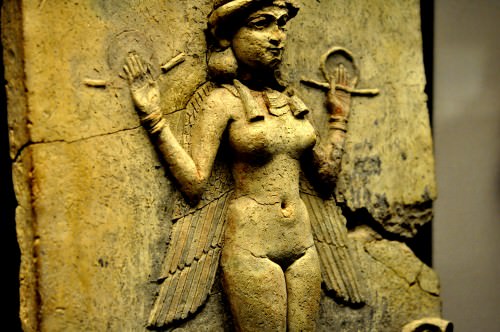
Lilith is mentioned only once in the Bible – in Isaiah 34:14, where the Hebrew word לִילִית (“lilit”) is translated as the “screech owl”.
In the verse, Isaiah prophesizes that Lilith would be one of the demonic nocturnal creatures who would haunt the destroyed kingdom of Edom.
This Hebrew word for the demoness Lilith is thought to be from the root word לִילִ which stands for “night” or “gloom”. In Arabic and Akkadian, this word stands for “night” as well.
However, it is believed by some researchers that the name Lilith comes from the Sumerian lil which means “air”, and in some cuneiform inscriptions, the terms lilitu and lilit stand for the disease-bearing wind spirits (source).
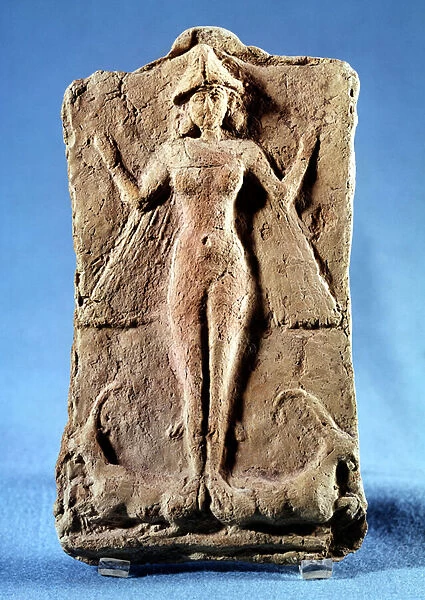
According to the same source, the first time that we find this spirit mentioned is at around 3,000 BC, as a class of Sumerian storm spirits called lilitu:
The Lilitu were said to prey upon children and women, and were described as associated with lions, storms, desert, and disease. Early portrayals of lilitu are known as having Zu bird talons for feet and wings. Later accounts depict lilitu as a name for one figure and several spirits. Similar demons from the same class are recorded around this time frame. Lilu, a succubus, Ardat lili (“Lilith’s handmaid”), who would come to men in their sleep and beget children from them, and Irdu lili, the succubus counterpart to Ardat lili.
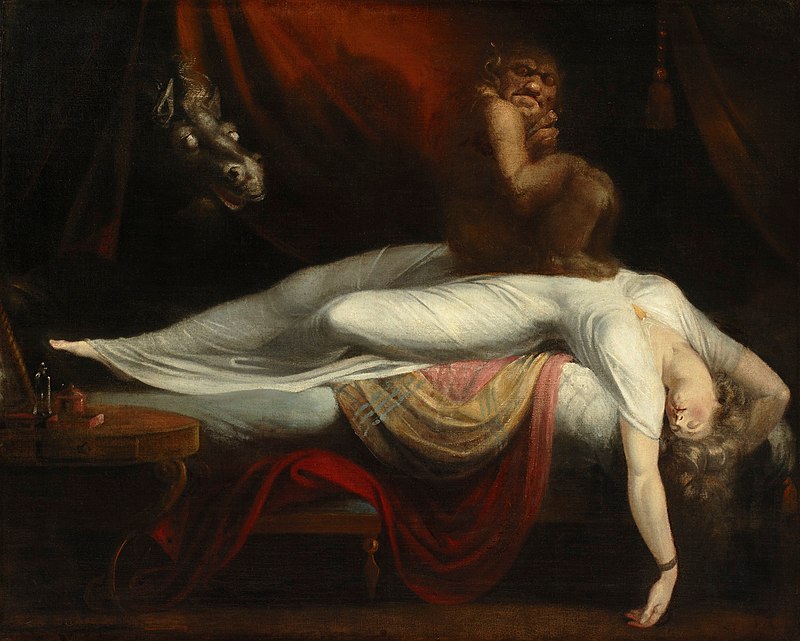
Further quoting from the New World Encyclopedia:
Babylonian texts depict Lilith as the prostitute of the goddess Ishtar. Similarly, older Sumerian accounts state that Lilitu is called the handmaiden of Inanna or ‘hand of Inanna’. The texts say that “Inanna has sent the beautiful, unmarried, and seductive prostitute Lilitu out into the fields and streets in order to lead men astray.”
Identical to the Babylo-Sumerian Lilitu, the Akkadian Ardat-Lili and the Assyrian La-bar-tu presided over temple prostitution. Ardat is derived from “ardatu,” a title of prostitutes and young unmarried women, meaning “maiden”. Like Lilith, Ardat Lili was a figure of disease and uncleanliness.
Lilith in A Gilgamesh prologue
In the Gilgamesh prologue, we find one of the earliest mentions of Lilith. In it, she is identified as a demoness who has her nest in a tree. Inanna, who planted the tree, came back to it after ten years to look after it, to find out that three creatures have made the tree their habitation.
When Gilgamesh found out about this matter due to Inanna’s plight, he killed the dragon occupying the tree, and another inhabitant, the Zu bird, fled with its young to the mountains, and Lilith destroyed the nest and escaped to the wilderness (source).
Lilith as a disobedient woman
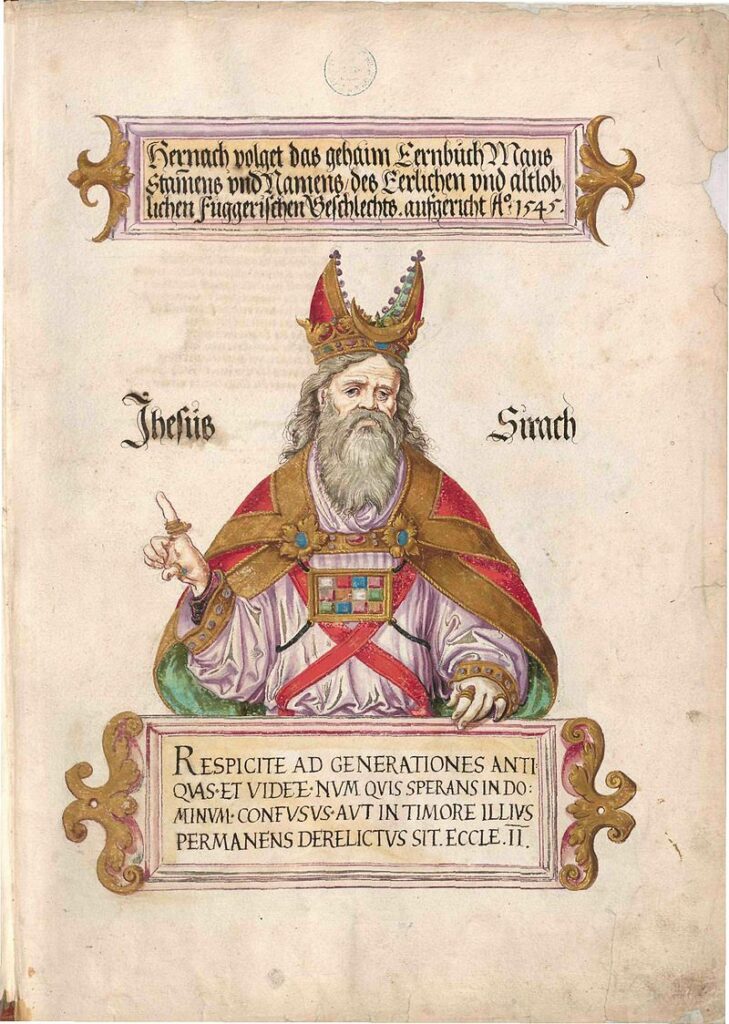
Although the myths about Lilith were present in many different cultures from ancient days, it was only in the middle ages that Jews began to claim her as Adam’s first terrifying wife who fled from him because she refused to submit to him.
The reason this story was invented (in the 8th – 10th century AD in the anonymous text Alphabet of Sirach) was in order to explain seemingly two different acts of creation of man and woman described in Genesis 1 and 2. Some started guessing that the reason these two acts of creation were described was that there actually were two of them.
It is told that at first, man and woman were created at the same time. However, they started fighting for supremacy the moment they were given life. Lilith refused to submit to Adam and escaped the garden to become a child-harming demon. As a result, another woman had to be created for Adam.
Protection against Lilith
Medieval speculations about Lilith’s origins were in no way the first accounts which made the name of Lilith more known to the Hebrew people. She was well known in this culture maybe from the very beginning and was feared by them for the very same reason she was feared by other nations – for her ability to harm, kill and snatch infants.
Israelis eagerly waited for the eighth day of the birth of a baby boy, so that they would circumcise him and would remove the threat of Lilith. The baby girl was told to be no longer in danger of Lilith after twenty days of her birth. Sometimes infants would wear protective amulets until the days of harm would pass.
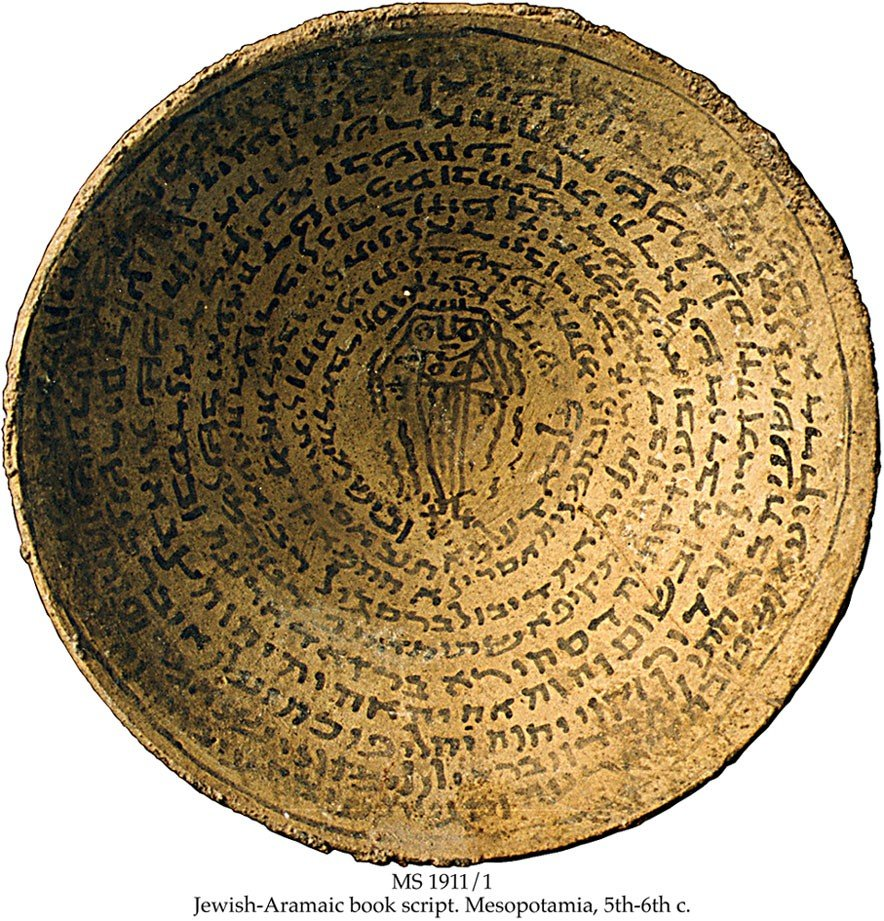
In the land of Israel, as well as in many other places in the Near East, there were found bowls with incantations written against this demoness.
On the incantation bowl, Lilith is drawn in the middle of it with bound hands or in chains, as it was believed that such a depiction of her would stop her from doing harm.
Around her picture, magical incantations were written in a spiral.
Such bowls, also known as “demon traps”, were buried upside down as it was believed that this would capture demons such as Lilith.
Such bowls were buried under the threshold, in cemeteries, or in the homes of recently deceased. Most of them were made against three evils – the evil eye, Lilith, and the Bagdana demons which are sort of like Lilith demons but stronger and having authority over Liliths (source).
Such incantation bowls found in Israel were dated from the 6th century AD.
The Succubus demon connection
Although this demoness was especially feared by new mothers, she was also identified as what we know today as the succubus demon who steals sperm of men sleeping alone and impregnates itself with it to give birth to hybrid offspring (source). This demon is believed to be the mother of hundreds of demons (source).
Liliths could be either male or female, according to the Jewish understanding. On one of the incantation bowls found in Nippur we read:
Thou liliths, male lili and female lilith, hag and ghool, I adjure you by the Strong One of Abraham, by the Rock of Isaac, by the Shaddai of Jacob, by Yah Ha-Shem by Yah his memorial, to turn away from this Rashnoi (…) and from Geyonai (…) her husband. [Here is] your divorce and writ and letter of separation, sent through holy angels. Amen, Amen, Selah, Halleluyah!
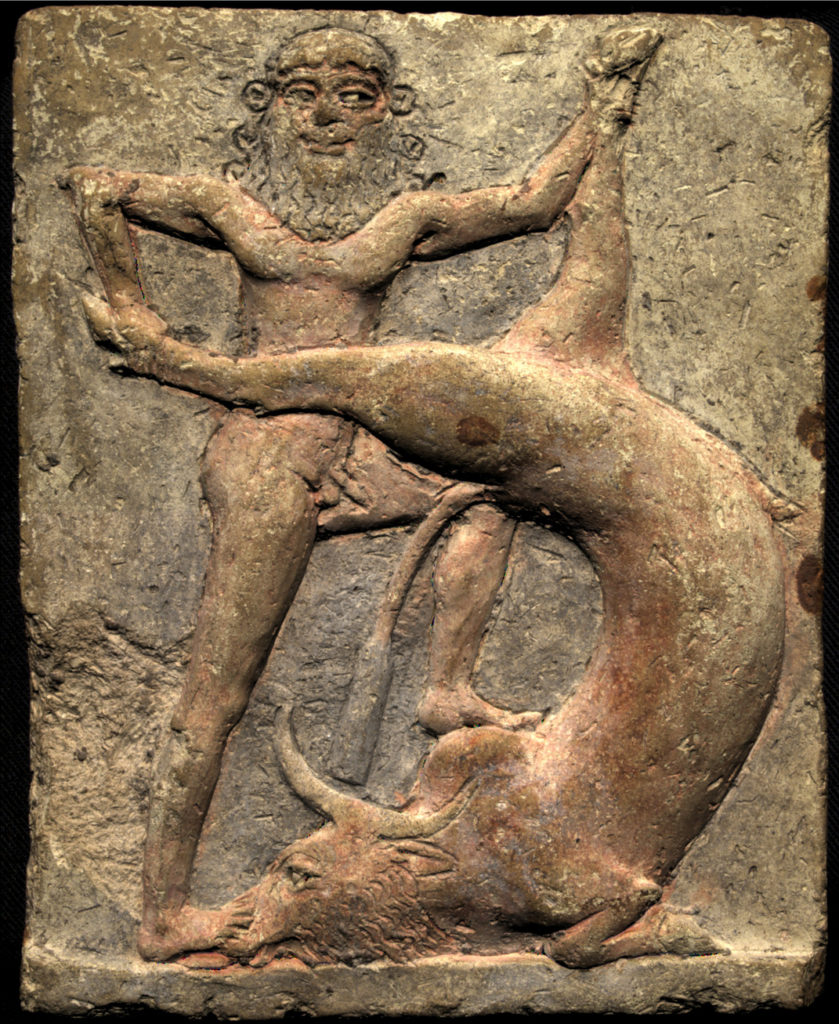
The male aspect of this demon is also found in Akkadian and Sumerian mythologies, which identify “Lilu” as a masculine wind demon.
Interestingly, the father of Gilgamesh is listed in the Sumerian king list as “Lilu” (source 1 and 2).
In one translation of the king list, Gilgamesh’s father is identified as a “phantom” (source).
Lilu was told to disturb women in their sleep and had the functions of an incubus (source). So, maybe Gilgamesh was born from the union of a woman and a demonic entity.
On another incantation bowl we read:
Salvation from Heaven for Dadbeh the son of Asmanduch and for Sharkoi the daughter of Dada his wife, and for their sons and daughters and their house and their property, that they may have offspring and may live and be established and be preserved from demons, devils, plagues, satans, curses, liliths and tormentors, which may appear to them.
(Source)
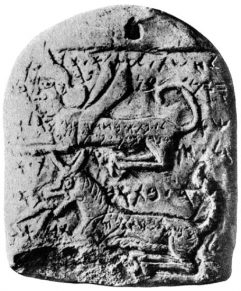
The tradition of making bowls with magic incantations against demons as well as wearing amulets for the same purpose probably came from Babylon, where such items were found as well (source).
In Babylonian myths, Lilith is depicted as a winged night demon preying on pregnant women and infants. She might be associated with the invention of abortions too, though there are no reliable sources mentioning this fact.
In ancient Mesopotamia, the words “lamashtu” and “lilitu” both signified the type of demons that snatch or harm babies. Lilith is known as a winged demoness that dwells in desolate places, and the verse mentioning her in Isaiah supports her affinity with such places of destruction as well.
Aramaic magic texts claim that Lilith could enter the room of a pregnant woman in the form of a fly (source). However, in the Aramaic tradition, demons were not limited to being able to only shape-shift into one creature – they could take any form that they pleased, and even become humans if they wished (source).
Some early, as well as more recent writers, depict Lilith as a beautiful yet evil woman, whilst some depict her as a totally sinister creature. She is even portrayed by some as the serpent in the garden of Eden or having some kind of reptilian features.
She is told to have long disheveled hair (source) and sometimes she is told to have the head of a lion (source).
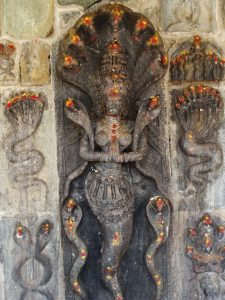
Sometimes, Lilith is depicted as a half-woman, half-snake being.
We see this kind of creature depicted in stone in many Indian villages.
In such places, she is sometimes shown with many eggs, probably showing her high fertility.
I remember even taking pictures of the multiple eggs that were engrafted on a stone in Gokarna, one of the pilgrimage villages of India.
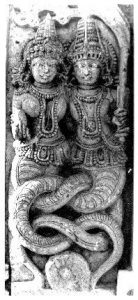
These half-snake, half-human beings are called “nagas” in India.
They were known through the Vedas since around 5,000 BC, according to the dating of some Indians.
They were known to be half-divine beings that were extremely gifted and able to assume any shape they desired.
So, since those beings were shape-shifters, they might be known in different cultures by different appearances. Therefore, Lilith is likely to be the very snake-woman worshiped by Indians, or at least related to them.
In Greek mythology, a similar demoness is called Lamia.
She is told to devour children and seduce men and then drink their blood (source).
In fact, in the early fifth century, in the Latin Vulgate manuscript of the Bible “Lilith” is translated as “Lamia” (source).
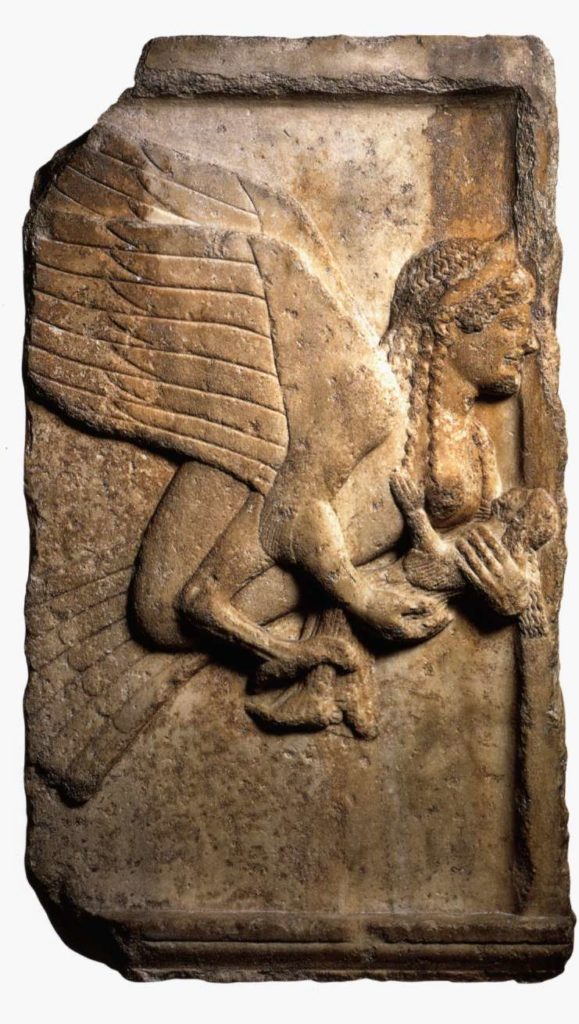
The HBO series True Blood has a character named “Lilith” too, and she is told to be the progenitor of the vampire race.
The name Lilith is also found in the exorcism text of the Dead Sea Scrolls (4Q510-511).
Lilith’s most well-known depiction shown at the beginning of this article is now doubted as whether it was indeed her depiction or the image of some other goddess (sources 1 and 2).
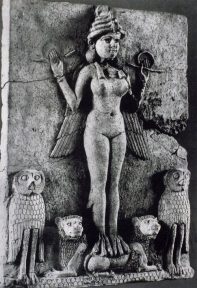
I do believe this to be her image.
That’s because she is described in other sources as a winged woman who is also associated with lions, owls, and birds with which she is often portrayed.
However, due to her shape-shifting nature, not all her depictions would look similar, and that’s where the confusion about her identity can arise. This changing identity can certainly be noticed among Hindu gods as well.
Beloved by feminists
Feminists tend to identify with Lilith because they associate her with freedom, unrestrained sexual activity, and independence from the male authority. This particular group of women tends to ignore the dark aspects of Lilith.
A Jewish feminist magazine is called by her name, and there is Lilith Fund run in Texas that supports abortion and has even raised money for helping to terminate unwanted pregnancies of those women who could not afford them (source).
Finally…
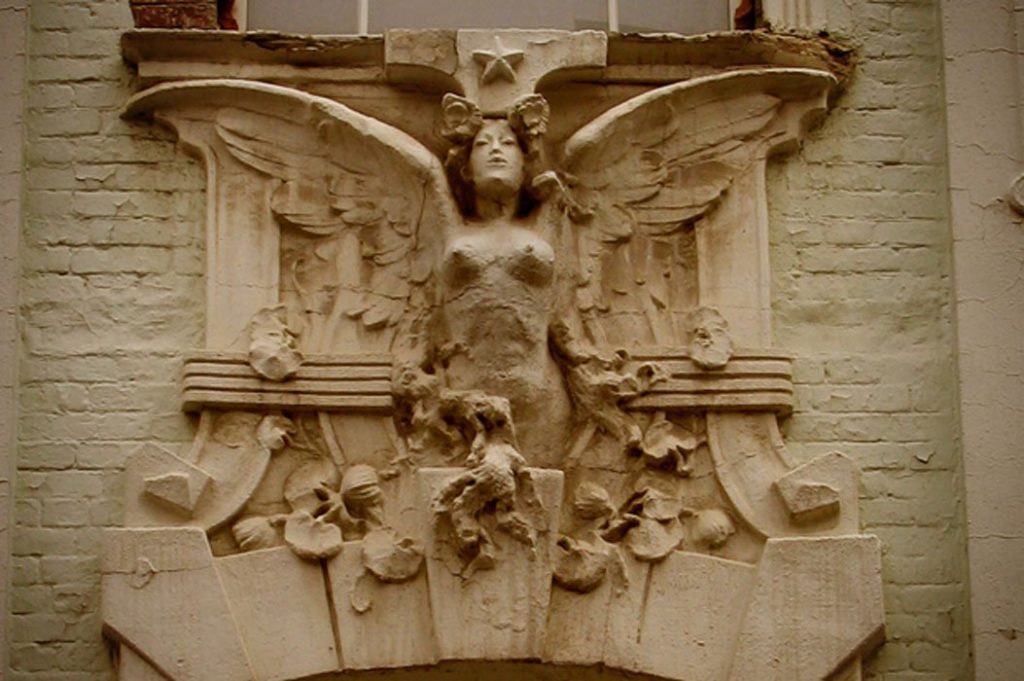
I hope that you have enjoyed reading this report on Lilith.
If you have more information about this particular spirit, please leave a comment below.


Hi, Simona.
I know that some people believe that they are two stories of creation in genesis 1-2 because of this theory: Man and woman were first created equal, in the image of God, who told rhem to subdue the animals and earth. At this point God said that everithing was good.
Then they was a fall, a spiritual one, who caused the woman to become the helper, and the man to be the one who subdued the animals and named them. At this stage God said for the first time in the Bible that something was ‘not good’, cause he said that it’ snot good for the man to be alone.
So humans actually fell twice, in genesis 2, and then in genesis 3 when they eat the fruit and one of the punishment they recieved was that the women became dependendent of man and submissive to him.
The loss of female freedom and authority over herself, her role as first equal, then helper, then needy submissive, was always caused by something “not good” or some desobeyence. But in principle wehen everithing was still good and pure humans were equal regardless of the gender and they lead the eath together.
What to you think? Personally it resonates with me.
There is a type of church named after Swadenborg, who was a man who studied the Bible. Personally I don t think that everithing he said and experirnced was truth and godly, expecially not all of his visions, but some things he wrote were illuminating and so diffrent than what modern conservative chriatian say.
Thare’ s a blog from a minister who studied Swedenbog’ s interpretation of many parts of the Bible, I don t know if I can write the name of the blog, it’ s leewoof.org
It would be amazing if you read something from this minister and told what you think about this not well known side of christianity. Thank you.
D.
I disagree, because there’s nowhere mentioned in the Bible that there was a spiritual fall of Adam and Eve before they ate of the fruit.
But then why there is so much difference between the creation in genesis 1 vs genesis 2? I mean, expecially so much diffrence between the rolas that man and woman had.
So is she a demon or not
Hi Danila,
I disagree as well and here’s why. This is also a misinterpretation from a philosophy professor that I had (he was anti-God and I kept correcting him in class 11 years ago). Many misinterpret Genesis 1 and 2 and claim the Bible is inconsistent.
However, it is such an easy explanation and it’s quite sad that most do not read their Bible and just believe false authorities that deny the Bible.
Genesis 2:4 in various versions, which comes right after God blessing the Sabbath day, the last day of creation.
New American Standard Bible
Genesis 2:4 – This is the account of the heavens and the earth when they were created, in the day that the YHWH God made earth and heaven.
New King James Version
Genesis 2:4 – This is the history of the heavens and the earth when they were created, in the day that the YHWH God made the earth and the heavens,
King James Bible
Genesis 2:4 – These are the generations of the heavens and of the earth when they were created, in the day that the YHWH God made the earth and the heavens,
Christian Standard Bible
Genesis 2:4 – These are the records of the heavens and the earth, concerning their creation. At the time that the YHWH God made the earth and the heavens,
and then..
Genesis 2:5 – King James Bible
And every plant of the field before it was in the earth, and every herb of the field before it grew: for the YHWH God had not caused it to rain upon the earth, and there was not a man to till the ground.
Genesis 2:7-8 – King James Bible
And the YHWH God formed man of the dust of the ground, and breathed into his nostrils the breath of life; and man became a living soul.
And the YHWH God planted a garden eastward in Eden; and there he put the man whom he had formed.
Right after creation, the writer continued with verse 4 in Genesis 2, and says “these are the generations, records, account, history of the heavens and the earth.”
That means the writer is going back in time to describe what happened when man was created. It is as if I write a summary and then proceed to say, “okay, we’re going back to point 3 to expand on that. Here’s the history of what occurred.”
It’s not 2 stories.
It’s one real and official story.
Genesis 2 is a detailed version of Genesis 1 during and after man’s creation.
God created man, and then placed him in the special garden, then created woman for the man as he was lonely. Genesis 2 is simply our real human history expanded and where it all takes off.
Genesis 1 is a summary of the official 7 days of creation (and prophetically, a summary of everything that is to come in the next 7000 years).
Being a help mate to Adam had nothing to do with being less than him The to become 1That does not make a woman lower than a man Some people think so that is not true The only once you believe that 1 to rule over women that’s called misogyny
This made me think about evilness in people today, whether or not they are influenced by demons. I believe they are. Someone with no compassion, who discredits the good in you, tells you your understanding of the truth is all wrong, and lies without remorse- I don’t know how they can turn into a nice person since they’re opposed to good will. And this is where some people might start to be influenced by bad spirits. So some accounts of bad spirits must be very real.
“The Bible tells us that long before God formed the earth, he created millions of spirit creatures, or angels. (Job 38:4, 7; Revelation 5:11) Each of these angels was endowed with free will—the ability to choose between right and wrong. Some of them chose to rebel against God, and they abandoned their position in heaven to cause trouble on the earth. As a consequence, the earth became “filled with violence.”—Genesis 6:2-5, 11; Jude 6.”
That explains that the spirit world existed way before creation, and we are warned against spiritism.
Yes, Ashley, I think so too. Thanks for sharing this.
Hello Simona,
I am greatly elated to have found your site by accident but i believe it’s has been ordained that i will come in contact with your work. You are very spiritual and what you talked about are true, to those that are spiritually inclined. I pray that the Lord, God of Host will continue to uphold you and grant you more wisdom in the knowledge of Him. Amen! Remain blessed!
A lot of people reading this article would think it is fantasy but it is true!
Also I recommend reading Supernatural by Graham Hancock.
I’ve struggled with addiction to sexual thoughts and acts for many years. For much of this time, I felt I should be circumcised to make the addictive behaviors more challenging for myself. I am middle aged and sleep alone now because I’m nocturnal by trade and my wife and daughter are awake during the day. I can see why this has been a challenge for me. I was married before and my wife left me for continuing to act out alone. Now, things are challenging for my wife and I in our current marriage. I keep working my steps. On my step 2 for the 2nd time, I wrote another “goodbye letter” to my ex-girlfriend as Dr. Doug Weiss identified her when he counselled myself and my first wife. My first wife went on to marry a woman, so I pray for her. Otherwise, to my knowledge, she was very gifted as a Christian. For myself, I ask for your prayers. I recently identified this addiction as “Easter’s daughter” because I was in a gathering of Jewish believers, and they studied this night creature once. Now, I’m not sure the best plan of attack; but if this is a real demon oppressing me and those in my life, I know my enemy and in Jesus’ name I pray against her. Perhaps, I need to wake up (as the shofar calls) and do a lot more praying and fasting to get myself as far from it as possible. I told this Easter’s daughter not to call, text, try to reach me through social media or even look my direction. I’m running from any form of her and praying against her in Jesus’ name, by His blood and the word of my testimony and of others. I’ll remember to do my best to keep applying Jesus’ blood however He leads to the area I sleep because I imagine I’ll continue to sleep alone for awhile. Thank you for your prayers.
The circumcision is performed as a covenent between the Jewish people and G-d. Not to keep Lilith away.
A sign between God and the Hebrew people (Israel), not just the Jewish. A sign between all those grafted in to Israel (Romans 11) and not just the Jewish.
my name is Victor love your show can you please send me the ancient texts I got mulch in the Bible thank you
Censoring comments that disprove your views? That’s not nice.